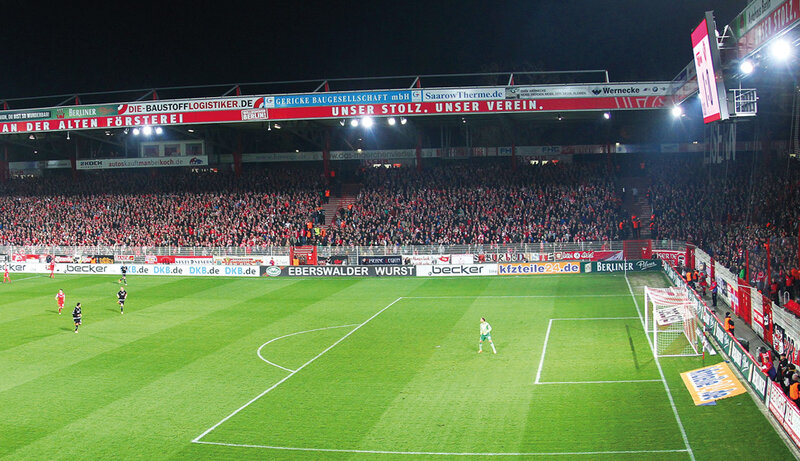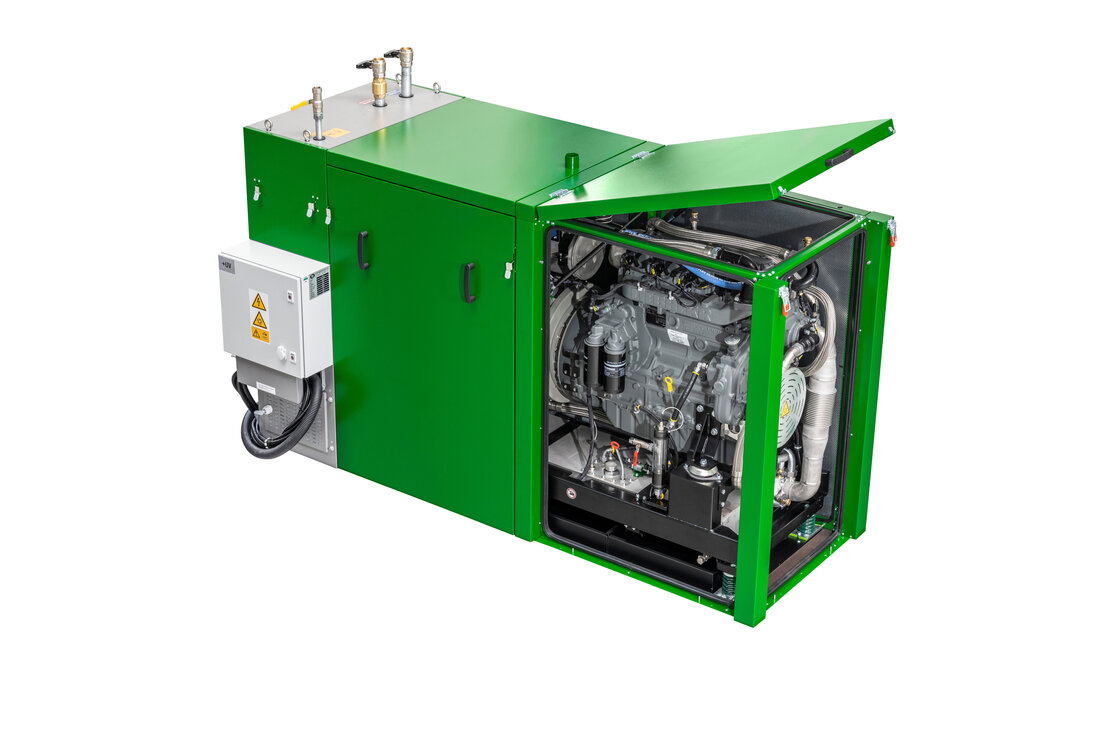First-class energy in a stadium
g-box 50 supplies a football stadium in Berlin
Facts & figures

With its long-standing tradition, An der Alten Försterei stadium is home to the football team 1st FC Union Berlin. After many decades, the only dedicated football stadium in the German capital was extensively modernized. One of the many changes was the switch to a modern energy supply.
“Alte Försterei” with new heating station
More than 2,300 volunteers and business partners took part in the expansion and conversion work, which was 100% privately financed. The goal was to make the stadium fit for the national league and to meet the special requirements of the German Football League (DFL). The most important construction measures included installing turf heating systems, modernizing the floodlighting and building a canopy over the standing places. In order to ensure a permanent, efficient heat supply for the stadium complex, it was also necessary to build a new energy station. This was handled by Kofler Energies, an integrated service provider which also invested in 400 meters of district heating pipework, heat storage system, control technology and transformer and power distribution systems for backup power generation, as well as loudspeaker and floodlight systems. This led to a 325 m² utility room, which three gas condensing boilers and a g-box 50 CHP plant were installed in. The plant supplies the heating systems and the central hot water supply of the new grandstand. In addition, the existing turf heating systems at An der Alten Försterei stadium and on the training field were supplied with energy from the combined heat and power plant.
Carbon dioxide emissions reduced by 600 tons a year
The switch from heating oil to natural gas at An der Alten Försterei stadium will save 600 tons of CO2 a year. The decentralized power generation supplies roughly 300 MWh per year – enough to provide for 120 two-person households. A further benefit of this state-ofthe- art system: all of the energy produced by the CHP plant is used directly on-site.

